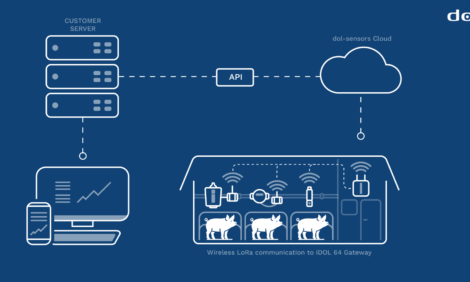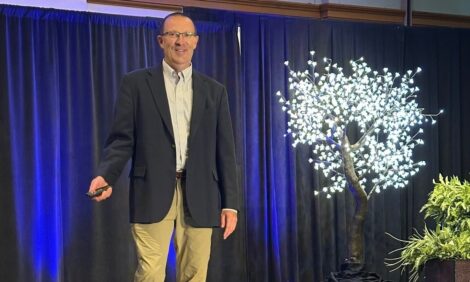



The Effect of Light Type on Gilt Performance
By Jennifer Hannesson, Pork Technology Transfer Specialist, Alberta Government. In Canada, swine barns are mostly intensive confinement facilities, which rely on artificial lighting. The majority of energy for lighting is consumed by breeding/farrowing barns, which use up to 10 to 16 hours of light per day (MB Hydro, 1999).
The current lamp types and lighting schedules for barn illumination and their cost efficiencies are inconsistent between and within barns.
Light in hog production is important not only from an economic standpoint, but also because of the potential influence artificial light has on animal performance.
Background
A number of environmental factors can influence a gilt’s age at puberty and future reproductive performance. Two of these factors are season and housing environment. By understanding environmental influences, management strategies can be enhanced.
For example, boar exposure reduces age at puberty, but as Paterson’s group (1991) found, when using a short day lighting pattern (versus a long day), age at puberty may be further reduced. Signs of seasonality remain in our domestic pigs, which are derived from the European wild boar, a seasonal breeder.
Because one component of light, photoperiod (duration of light), has an influence on reproduction and hormonal mechanisms, it is possible that another component of light, such as spectrum, may also have an influence. Therefore, the potential influence of light type should be considered, along with cost differentials, when selecting barn lighting fixtures.
Research Objectives & Methods
Research at the University of Manitoba was conducted to compare the effect of four light types on hormone changes, growth rate, puberty onset, estrus expression and embryo survival in gilts. These lights have different economies in terms of installation costs, operating costs and lifetime energy efficiencies.
Light types compared were: High Pressure Sodium (HPS), with a low colour rendering index (poor light quality); Metal Halide (MH), a whiter light common in current use; a mixture of these two (MH+HPS) and
T8 Fluorescent (T8). This article will report the results for growth and reproductive performance under the different lighting regimes.
At an average age of 123 days, 101 gilts were randomly assigned to one of the four light treatment rooms. Lights were on for 10 hours daily. Weekly measurements were taken for weight gain, backfat (BF) and feed intake. Age at and duration of first (pubertal) and second estrus were recorded. Following insemination at second estrus, ovaries and embryos were examined at 28 days of gestation.
Growth Performance & Feed Intake
Results for growth and feed efficiency (FE) during the finisher period did not show any effect from light type (Table 1). This period began at the start of trial when gilts were at an average age of 123 days and at an average weight of 67 kilograms (kg) and ended when gilts achieved a weight of 110 kg.

Reproductive Performance
Reproductive performance, as measured by number of gilts achieving puberty, age at puberty and embryo survival, was not significantly affected by light type (Table 2).
However, an interesting observation arose related to HPS, which has a reddish-orange spectrum. Under this light type, it was difficult to differentiate skin colour changes such as redness of the mammary gland and vulva because this light’s spectrum absorbs the red colour. Therefore, HPS would be a poor light to use in breeding or farrowing barns because vulva changes are difficult to detect.

Conclusions
It is important to understand how the housing environment created for pigs may affect their performance. In this study on the influence by light type on gilt performance, no significant differences were present between light types for growth performance, feed intake or reproductive performance.
Results of this research demonstrate that selection for a light type to be used in barns may, largely, be based on the economic efficiency of the light/lamp. However, because of differences in light colour quality, consideration should be given to the activities performed in a barn.
Further Information
To read the full report please click here
Source: Alberta Government - September 2005






